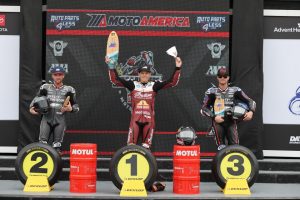Right before Tyler O’Hara tackled the double shift of defending his crown and chasing a new one in Atlanta last month, we interrogated him about King of the Baggers AND flat track racing at the same time. He knew the Indian Challenger inside and out but this was only his second time riding the FTR750. The results of that weekend are in the history books but here’s what Tyler O’Hara had to say going into that momentous occasion.
VTV: In the beginning what appealed to you about bagger racing?
TO: The challenge. I’ve been a bike specialist; that’s kind of been my specialty: big bikes. That’s just the challenge of heavy motorcycles. The opportunity to work with American manufacturing and motorcycles is a dream come true.
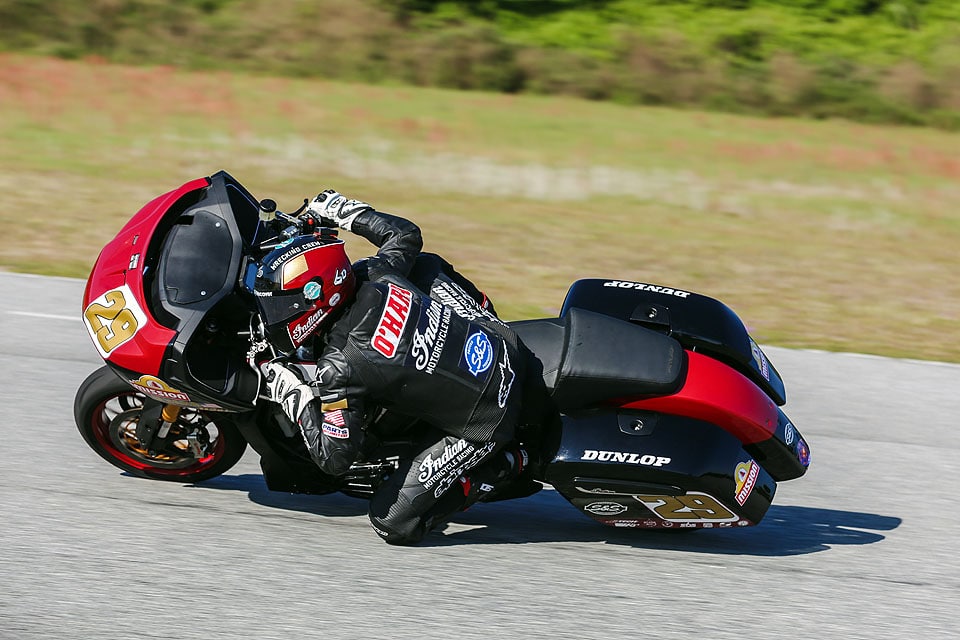
VTV: So how did you come to be involved with King of the Baggers specifically? Can you walk us through that?
TO: Yeah. Paul Langley, former president of S&S Cycles, I’ve known Paul, shoot, since 2012, 2013. We ran the Vance & Hines XR1200 series. I met him back in the day. We rode on the 1200s. And it was actually out at Daytona two years ago, running the Daytona 200 on my sportbike. Paul approached me; they were running the Daytona Super TT at the same time and we ended up having a riders’ meeting at the same time. He approached me, said, “Hey, you’re the guy I want to ride my bike, and it’s a really good opportunity.” I said, “Ah, well, I don’t know if that’s where I’m at in my career right now, you know…”
But he talked me into it and said, “The bike is really good and I promise we will have the best bike out there and you know we’re gonna have fun.” So it took a couple phone calls back and forth but it worked out. Basically, I was able to trade. Now I get the opportunity to race the Indian FTR750 at the Atlanta Super TT, so it’s a win-win. I get to race the Indian Challenger and have fun, represent an American manufacturer, and I get the opportunity to race the FTR750. Just being in the paddock. Every session counts. Someone’s always watching. When I was at Daytona, I rode hard every session, and I did my best, and I was up front every session. Sure enough, Paul was there watching. That’s what lead into this opportunity.
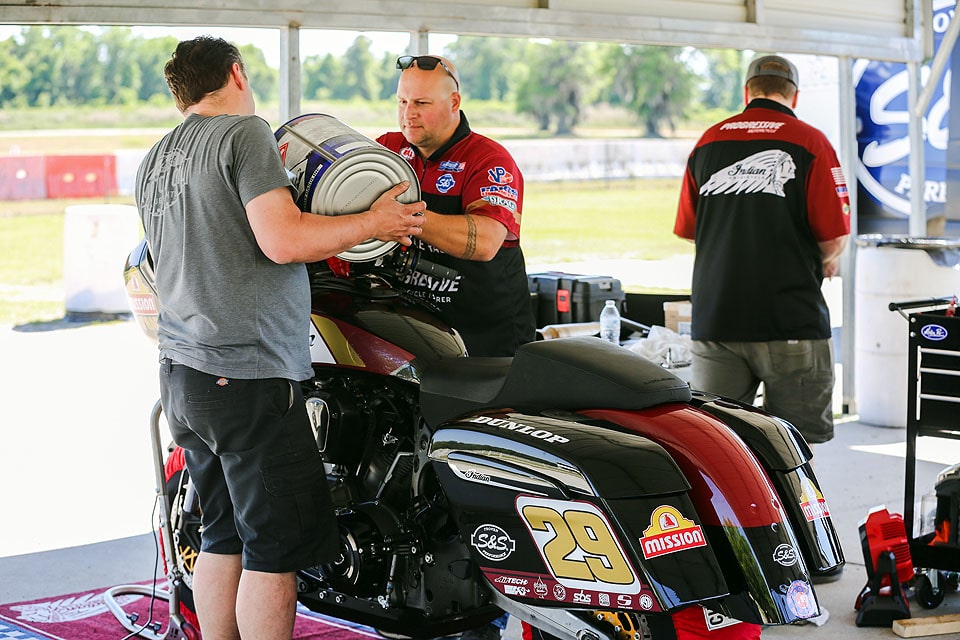
VTV: What was your initial impression the first time you took a bagger through its paces on the track?
TO: The first time I flew out to go ride it, I basically rode it around Viola, down the back roads. Around S&S Cycles. It was just a shakedown. The power of that V-twin is just so smooth and very ridable with a linear powerband. And then obviously I have quite a bit of experience running other twins and right away I could tell just that we had a really good platform and the first test we went to it actually got rained out so we didn’t get to do any riding. The first time I got to ride the bike really through its paces was great. It was a lot of fun. The bike’s really stable. Once you get it to the apex the bike sets and I’m just glad I’m on an Indian for sure.
VTV: So what would you say are the differences in skillset and riding strategy racing that bagger versus the flat track bike?
TO: Well, with the Indian Challenger and racing a bagger, first and foremost is you can’t over-ride the bike. The bike is 630 pounds. You almost have to anticipate your movements as far as getting the bike to put it where you want it. You also have to be just flawless with hitting your marks, and your brake markers, and just be extra, extra smooth. And dirt bikes are so torque-y. You kind of short shift them and roll around. And the shear weight of the bagger. But we’re riding them to the limit and sliding them around and burning the tire off the corner and we’re making good power.
That’s basically how you gotta ride the Indian Challenger where the FTR750 is a modern-day race bike, purpose-built. It’s just power right away. The intensity is up, I would say. Not to say that the Challenger isn’t intense but just the tempo and the rhythm are a lot more intensified. And then with the 19-inch wheels riding on the dirt, the track is changing every lap so you gotta stay on top of the track and you really have to adapt to the situation as the track changes. And with the jump in the Super TT, that’s a whole other challenge that I haven’t had the opportunity to do yet. I haven’t jumped a 750 twin but I’m looking forward to sending it off that jump so that should be pretty rad.
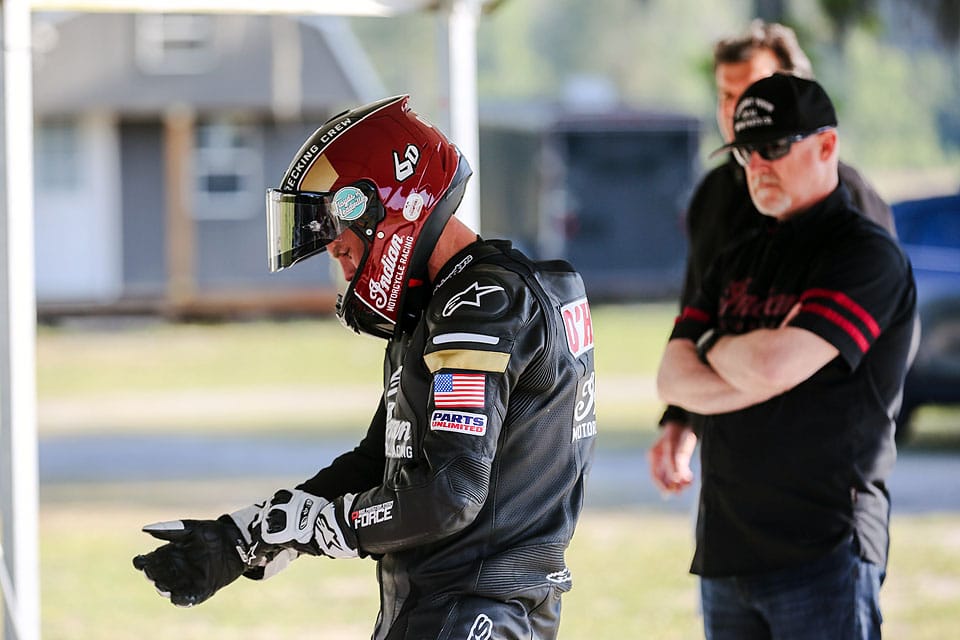
VTV: You’re doing both types of racing in the same season, at the same time. How are you managing that and the going back and forth? I know that when I go from a light bike to one that’s heavy with a different stance and different characteristics that it takes me just a second to adjust in my head and switch mindsets. Do you think that’s something you’ll have to deal with this season? How does that play out?
TO: Yeah, fortunately this weekend is my chance to run both the Indian Challenger and the FTR750. So the weekend will be especially challenging adapting from one bike to the other. I do have quite a bit more time on the Challenger now so I’m very comfortable on it. After our last test we did right around a hundred laps so getting on that I feel really comfortable right away.
With the FTR750 we’re going to run practice on Friday and get a couple sessions in and I’m still learning the bike. I’ve honestly been doing a lot of visualizing just seeing myself riding it. First off, you have the GP shift on the Challenger. The FTR750 is standard shift so seeing myself putting it in first gear, pushing down on the shifter, little stuff like that. I’m just gonna enjoy it, man. I’m going to enjoy this opportunity and take advantage of it and just go have fun.
VTV: That’s what it’s all about. Now what’s the Challenger’s greatest strength on the track?
TO: Handling, for sure. I could go on and on. The brakes, the handling, the shifting. (laughs) I could keep going. But for sure, the chassis and the motor; just the balance of the bike. It’s very ridable.
VTV: Looking back on the different types of racing you’ve been doing, you started when you were five. You’ve sort of done it all. Do you have a specific type of racing that stands out as a favorite to you?
TO: Probably Super Moto. Just because you get road racers, you get supercross riders, you get motocross riders, you get flat trackers, you get everybody in there and you have half asphalt, half dirt. Just like the Atlanta Super TT this weekend. So you’ve got your guys who’re strong on the asphalt or strong on the dirt and it’s just an overall rider shootout.
And just for an example as far as adapting, when I was twelve or 13 I had an `89 RM80. All my buddies had 2001 CR80’s and all of these badass 80s and stuff. I went from an 80cc to my dad’s CR500. That was a HUGE learning curve for me and the deal was basically that if I couldn’t load it up myself I couldn’t ride it, I couldn’t start it by myself I couldn’t ride it. So there were days when I would be so damn upset because it was just so hard to start but once I figured out how to start it, it looped me off going up a jump and even on a landing. Just being able to adapt like that, really throwing me into the deep end. I love having the support from my dad and my family. My dad’s always believed in me that I can achieve my goals and my dreams. That goes back a long time. I’ve accomplished a lot of things just from putting my mind to them. Rising to the occasion.
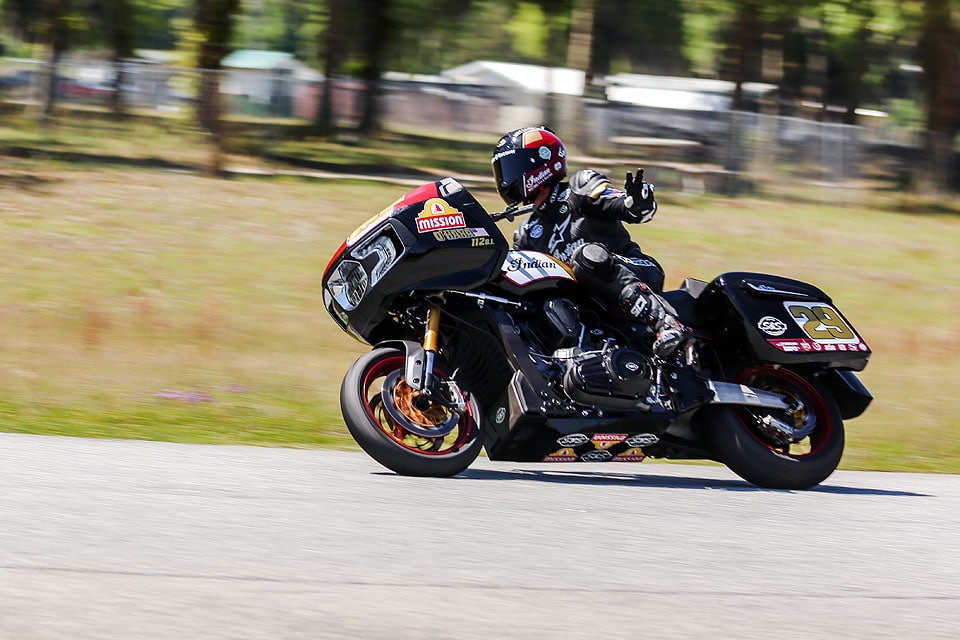
Find out where Tyler O’Hara will be racing next on the S&S Cycle racing schedule for flat track, King of the Baggers, and the Bagger Racing League.
Testing photos courtesy of the Mission Foods S&S Cycle Team.


